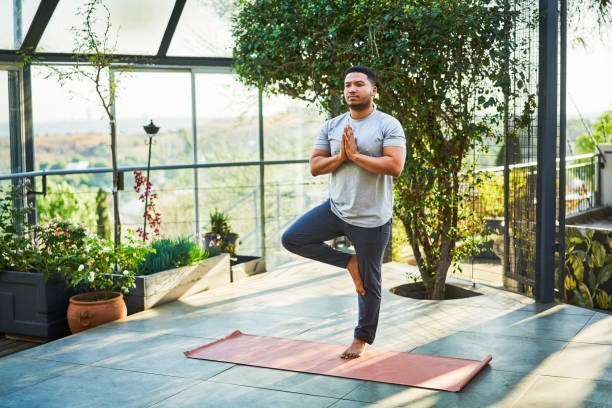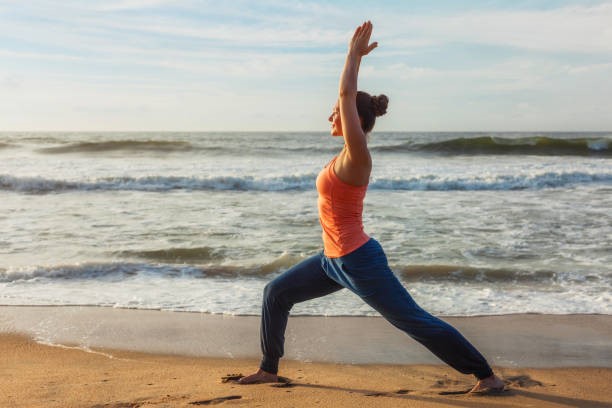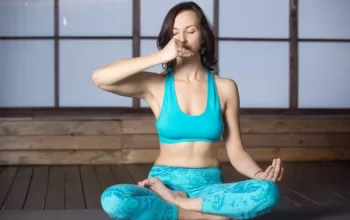Yoga for beginners is overwhelming. Because there are lots of yoga poses where beginners are stuck. Well, here we are with our new blog on yoga poses for beginners.
Starting yoga can be easy but keeping it consistent seems to be hard. But if you are guided with the right instruction and yoga tips it will become easy for you to carry on your yoga journey.
However, yoga is extremely beneficial in terms of
- Increasing flexibility
- Muscles strength
- Improved respiration
- Helping to maintain the metabolism
- Weight reduction
- Support in recovering from injuries
- Cardio and blood circulation
Apart from that, the best time for doing yoga is in the early morning after doing some simple exercise like walking and running. One can also set up three model exercise routines.
Which starts with simple exercise( walking and running), then simple yoga, and lastly meditation exercise.
While in the part of yoga as a beginner, you can start with simple yoga exercises and take more challenging yoga after clearing the beginner’s level.
So, here we came up with 10 yoga poses from which beginners can start their journey.
1. Mountain Pose (Tadasana):

It is the simplest yoga pose that teaches one to stand in mountain-like positions. This yoga asana helps to increase focus and concentration.
Yoga is not only about physical exercise. In all the yoga asanas you would find mental and physical bodies working together.
However, Mountain pose seems to be simply standing but there are a lot of unnoticeable things going on.
How to do it:
You stand against the wall and check your alignment. You can even try to raise your hands and scratch your body. Meanwhile, take a long breath and continue this exercise 5-6 times.
2. Tree Pose (Vrksasana)

Vrksasana also known as tree pose is the best yoga asana to do breathing exercises by balancing the body on one foot. Which also improves the focus ability.
How to do it:
Stand in the simple position, and then keep your feet together, slowly take one foot upward and place your hand in the prayer position as shown in the picture.
Take a deep breath in the same pose and release, Do this breathing exercise at least 8-10 times, and also keep your eyes closed if you have built up confidence. For that, stand with your back against the wall if you feel unsteady.
3. Triangle (Trikonasana)

Trikonasana is for stretching the legs and body. It is also beneficial to open up the lungs. It is one of the essential standings poses among the many yoga styles.
How to do it:
Stand with your feet at 90 angle degrees, and keep your hands on the shin to the right leg as shown in the picture.
Balance the body weight equally on both feet. Take a breath and realize it, do the breathing exercise in the same position at least 9-12 times. Change the position, after doing it on the one side toes.
4. Warrior I (Virabhadrasana I)

The key benefit of the Warrior pose is to strengthen and stamina the body. Which stretches the entire lower body.
How to do it:
Stand in the mountain position, then take your right foot ahead, and raise your arms perpendicular to the floor (and parallel to each other).
Turn on your left foot to 45-60 degrees and right foot to 90 degrees and align the right heel to the left heel.
In addition, band your right foot to the front and raise your hands upward, take a few breaths and continue by changing the position.
5. Downward-Facing Dog (Adho Mukha Svanasana)

Downward dog yoga which is also known as Adho mukha svanasana is aligned with another yoga step that is upward facing dog. Both are connected and an individual can do both at the same time.
It stretches the stomach area, especially the intestines.
How to do it:
Firstly, come forward to the floor with your hands and knees, slightly take your hands forward to the shoulder and knees below your hips
Take a deep breath out, lift your knees off the ground, and lift your butt up toward the ceiling. As much as you can, straighten your legs, and softly press your heels into the ground.
Your back should be flat, your head should be positioned between your arms and facing your legs. And hold your breath 8-10 times.
6. Upward-Facing Dog (Urdhva Mukha Svanasana)

An upward-facing dog is quite similar to a downward-facing dog. It is aligned with the other yoga step that is upward-facing the dog. Both are connected and an individual can do both at the same time.
How to do it:
When you are in the downward-facing dog position, stay at it, take your head upward, and bend your lower body toward the floor. And then similarly take a few breaths.
7. Seated Forward Fold ( Paschimottanasana )

Seated forward fold is an extremely useful yoga practice for stretching the lower body from the stomach to the knees.
How to do it:
With your bottom napping on a folded blanket and your legs out in front of you, sit on the floor. Stretch as you inhale and raise your hands above your head. Stretching for your feet while reaching out with your arms.
Imagine your belly button going toward the top of your thighs as you lift your chest and contract your lower abdominals.
Hold the position for up to 10 breaths before inhaling to gradually release it.
8. Bridge Pose (Setubandhasana)

The bridge pose is good for strengthening the back body and stretching the front body. Beginners whose goal is to reduce weight can utilize this yoga practice. Stretching the stomach and back can decrease the fat.
How to do it:
Seat into the normal position around the floor, and place your feet hip-width apart. Press onto your feet and lift the butt up to the mat. Meanwhile, press the shoulder towards the floor and Interlock your palm.
Do breathing exercises while coming to the position.
9. Child Pose ( Balasna )

A child poses also known as balasana is the resting pose to rescue stress, tension, and anxiety. It is delightful for yoga practitioners, not just beginners.
How to do it:
It’s a very simple exercise for beginners, where they have to touch their head towards the floor in the bend position as shown in the picture. One can try to hold their breath as much as one can while doing this asana.
10. Savasana (Corpse Pose)

Savasana which is the relaxation posture. No yoga practice is completed without a relaxation pose, every level of yoga practitioner does at the last.
However, it might seem easy yoga practice but the fact is that it is one of the most difficult yoga asanas because while doing this asana you have to be focused for at least 10 minutes in the present.
You have to try to stay in the present with your mental activeness.
Why use a yoga app for exercise?
Apps are a good form of building habits and you might be aware that as we are using social apps we are already being habitual in using them. But these apps can form a good habit of doing exercise.
Yoga apps will be extremely beneficial for beginners because they will not just only guide you in the exercise but also help you out building exercise habits that will stick you around and not let you give up.
Furthermore, apps include various features like notifications and reminders that will trigger you to exercise regularly. Even though one can also exercise by enjoying on-demand classes with yoga professionals.
However, connecting healthcare professionals becomes easy. They Build yoga app to provide their
To sum it up:
Today, in a busy life where people are eating junk food, not getting good sleep, and other bad habits are inviting deadly diseases and moving towards a worse lifestyle.
So, Doing exercises whether it is yoga or any other exercise is essential to living a better lifestyle. It will also help you to grow mentally and physically.
Yoga exercise can be a good start toward physical and mental development.




